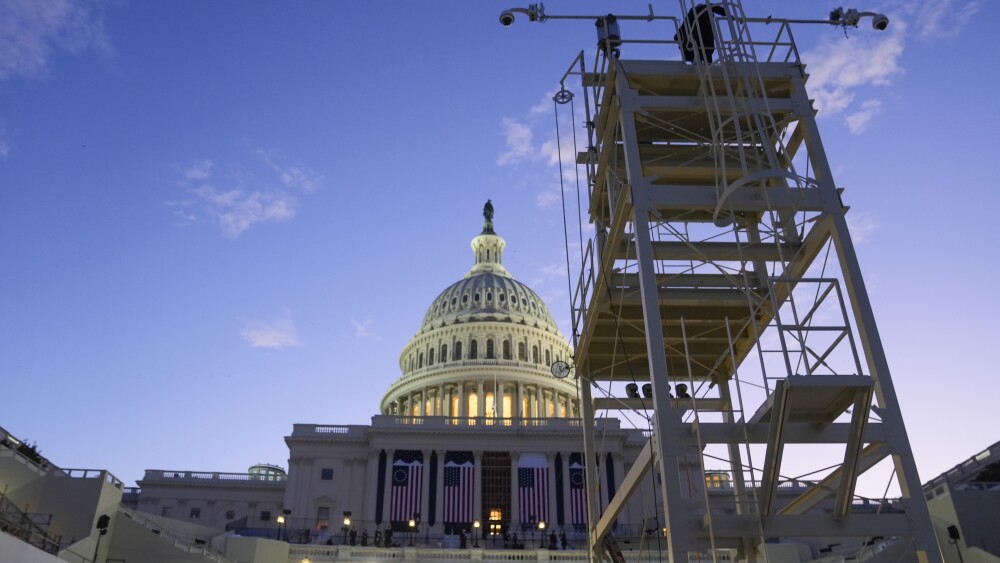Large-event planning can be a dynamic responsibility for any fire and EMS department; however, national security events like Inauguration Day are particularly unique. And while Jan. 20, 2025, is certainly not the first Inauguration Day, it is the first one planned for a candidate who has already experienced two assassination attempts. As you can imagine, security is tight. Fire and EMS units deployed on site will operate as a branch under Secret Service command.
DC Fire & EMS involvement
Inauguration Day activities kick off with ticket-only gates opening around the U.S Capitol at 6 a.m., with the swearing-in of Vice President JD Vance first, then the President Trump at noon. The Inauguration is followed by a parade and the official inaugural ball (as well as many unofficial balls).
I spoke with District of Columbia Fire and EMS Chief John Donnelly, who emphasized that he takes the Inauguration Day mission very seriously and is proud of the work his men and women put into their work every day, especially on this day.
“The inauguration of the president is the highest security event and largest mobilization the D.C. Fire and EMS Department plans for. The planning effort involves 10,000 personnel, begins a year in advance, and involves the coordination of local mutual-aid and federal assets to ensure the peaceful transfer of power. While we plan to work in this complex environment, we also are focused on ensuring that our fire and EMS services in our community are maintained at the highest levels.”
One operational change Donnelly noted for this year: more non-scale fencing – nearly 30 miles worth – to help secure the event.
Leveling-up event planning
As we explore the dynamics of large-event planning, I speak from the perspective of having been at least peripherally involved with the public safety planning efforts for seven presidential inaugurations and more deeply involved with three official county inauguration events.
Planning for any large event should include a series of pre- and post-event meetings to plan needs and evaluate outcomes. For an event like the Presidential Inauguration, exercises should be conducted and contingency plans created. It’s not good enough to simply have contingency plans, you must practice them. After all, operational and contingency plans not exercised are merely pieces of paper. Exercising contingency plans may take extra time, but it has the potential to uncover key weaknesses that must be addressed before event day.
From a planning perspective, most large-scale event exercises should always take worst-case scenarios into account, even though few, if any, ever play out. How we perform will, in large scale, depend on how well we exercise, how well we cooperate and, yes, who’s sitting in the command role if something happens.
How do you prepare and respond?
Planning for large-scale event response should extend well beyond Washington to every backyard fire department across the United States. You are the ones your community expects to be prepared to respond when the proverbial stuff hits the fan.
You should be working hand-in-hand with your local law enforcement entities on planning for such events. Remember the National Incident Management System (NIMS) doctrine that arose out of 9/11? You should develop an ICS structure that makes sense for the size and scope of the events you face. Ensure that your department is part of the solution, not part of the problem.
Your day-to-day fires most likely don’t engage branches (e.g. fire, law enforcement, EMS, public works, etc.). While a unified command may mean branches are not necessary, for something as large as the inauguration teams will need all the support they can get. At a minimum, I suggest you plan to establish Command, Sections, and Branches to match the needs of the incident. This will not be a tailgate command opportunity. Mobile command buses will be your best bet, not only providing closed-in environments for decision-making, but also allowing for true mobility of command, if it becomes necessary.
There is a dynamic difference between tactical/mass-casualty response and everyday incident response. Any event with hundreds of thousands of attendees requires much more tactical response than our everyday incidents. It is important to recognize that the fire department’s ability to directly and positively impact these events is extremely limited, but we must be prepared to respond. After all, as noted above, the biggest difference between past inaugurations and this one is that the candidate has already been the target of assassination attempts. While this is not a fire/EMS-managed issue, the potential response to any violence, particularly an active shooting situation, would certainly involve fire and EMS.
Make sure you’re prepared and that you’ve exercised both your plan and your contingency plan. No matter your political ilk, Grandma Jones expects that you’re coming to help her in her darkest moments – let’s not disappoint!














